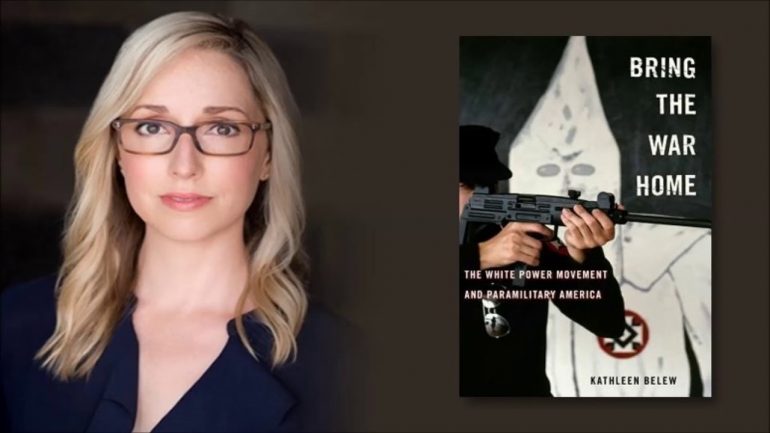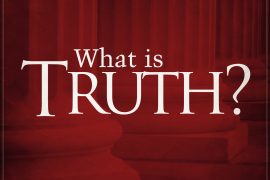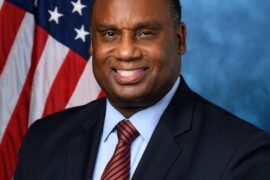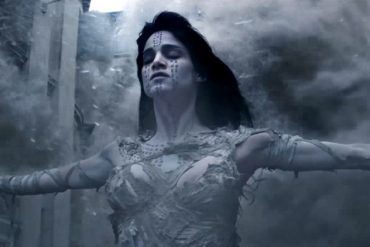On March 4 the Congress of the United States was forced to adjourn early after security officials received information about another planned attack on the nation’s Capitol. This was to eliminate a possible repeat of the January 6 debacle, only this time it was a false alarm.
How has it come to this? How could the highest governmental forum of the world’s most powerful nation be forced to cut short its deliberations – again — under threat of assault by a rag-tag domestic mob?
Now comes Kathleen Belew, a University of Chicago historian, with a plausible explanation in her book ‘Bring The War Home, the White Power Movement, and Paramilitary America’. She traces today’s White Power movements back to the war in Vietnam, to its unmasking of government incompetence and its seeming legitimation of violence as a political strategy. Her Exhibit A is the fanaticism behind the 1995 bombing of the federal office building in Oklahoma City.
“The Oklahoma City bombing,” Bellew writes, “stands as the fulfillment of the revolutionary violence waged by the white power activists. Gulf war veteran Timothy McVeigh carried out the bombing in connection with other activists, read and distributed the novel that had structured the violence of the ORDER, chose a building that white power had targeted since 1983, the year they declared war on the state, talked about stealing weapons from the military post; and saw civilians as “collateral damage” in a war upon the federal government. Bellew continues “His action was the work of a post-Viet Nam War Paramilitary white power movement that was structuring militia violence and supposedly “lone acts of terrorism” in 1995.”
But despite the horror of Oklahoma City, where 168 died, the hard fact that militant White Power was only just beginning to flex its ugly muscles was strangely placed on the shelf.
Racism’s Disappearing Act
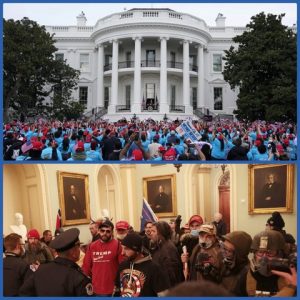
Left unfinished, unexplained and unconfronted, it was inevitable that the movement would only grow in the years following 1995. White Power was readily legible as a coherent social movement, yet for years it was largely narrated and prosecuted as a series of scattered actions by inexplicable “lone wolves” motivated not by ideology but by madness or personal animus. Recent events, however, show it should have been recognized as producing, supporting and deploying a coherent world view. And that view poses a radical challenge to our treasured liberal consensus around racial and gender equality, around support for crucial democratic institutions including the vote, the courts and the rule of law.
Instead , there was a seeming disappearance of the movement in the years after Oklahoma City. This vanishing act was, in effect, engineered by the white power activists themselves, but permitted and furthered by government actors, prosecutorial strategies, scholars and even journalists. Their unwillingness to confront the ugly new reality left open the possibility of new waves of action. Even as prolonged wars in Iraq and Afghanistan shaped a new generation of camo-garbed white power activism, this new activity would largely evade public understanding despite the warnings of watchdog groups. That is, until it broke into mainstream politics inthe 2016 presidential campaign and election.
Outright racism and a need to re-establish white supremacy were major motives behind the January 6 Capitol chaos instigated by the pro-Trump mob. Thomas Edsall of the New York Times fairly asks “How toxic is the combination of pessimism and anger that stems from a deterioration in standing and authority”? How hard is it for any group, whether it is racial, political, or ethnic, to come to terms with losing power and status? What encourages desperate behavior and a willingness to believe a pack of lies?”
Also, in the Times, Bart Bonikowski, a professor of sociology at NYU, argues that “What makes their actions all the more dangerous is a self-righteous belief, reinforced by the President, that they are on the correct side of history as the true defenders of democracy, even as their actions undermine its core institutions and threaten its stability”. And Andrew Cherlin of Johns Hopkins U. observed that white supremacy and rank racism are prime motivators, and they combined with other elements to fuel the insurrection: a groundswell of anger directed specifically at elites and an addictive lust for revenge against those they see as agents of their disempowerment.
The Pathology of Racism

These socio-political analyses work. However, racism is the key constant here in understanding why and how this kind of violence is possible. Another explanation would be the pathology though which racism creates these conditions. An individual experiences their standing in society as relative and comparative. So sometime the gains of other groups feel like losses to whites. Whites in the last 60 years have seen minorities gain more political power and economic and educational opportunity. Even though these gains are grossly exaggerated, whites perceive a loss in status.
The United States had a Civil War over slavery in the 19th century and subsequently a continuous history of structural racism and white oligarchical rule until the 1960s … and in many aspects until the present. Trump supporters who rioted in DC share the belief that Trump is a hero. Trump did not find the mob, the rioters found him. The white mob consisted of veterans, law enforcement officers, teachers, realtors, elected officials and at least one that knocks your socks off. Fred Klein was a State Department Trump appointee with top secret clearance. He was among those charged by the FBI for his role in the January 6 sedition. While diverse, most had anti-Black goals that glued them together.
Obscured in that day’s mayhem was the trauma endured by two groups of Blacks in the middle of the riots – the African American congressional staff and the Capitol Police on duty January 6. Luke Broadwater of the New York Times reported under the headline “Black officers fought a different battle. The racist slurs hurled at Black officers were especially painful.”
Blow-by-Blow

Capitol Police Officer Harry Dunn reported the following: “The bigotry and trauma experienced that day were enough to intimidate anyone.” Now that he is talking about his experience, he says other Black officers have told him that they too, experienced racist slurs from the rioters. “I didn’t really get a sense things were turning bad until they found the pipe bomb at the RNC in the afternoon,” remembers Dunn. “The crowd started growing. These were terrorists. They had weapons and they were attacking us. They had flags that said “COME AND TAKE IT” with a picture of a gun. You know these guys are fricking armed. And I’m thinking ‘I got my gun pointed at these guys and I can’t concentrate on one person. But 100 people could concentrate on me. How long is it before I get shot?’”
“The MPD Metropolitan Police were holding the line so valiantly. They fought their asses off. The rioters didn’t just come through the doors, they came through the windows. We were outmatched. There were downed officers behind me and I’m like “ I have to hold this hallway. Y all not coming through here’ They said” we’re coming” .” This is our house, We’re taking over” That’s when I said” We’ve got dozens of down officers here. Why are y’all doing this. Get out. It was a group of OATH Keepers and they appeared to be concerned. “Officers are hurt?” That’s when one guy said “We’re doing this for you” and showed me his badge. He was an officer! But they didn’t get through me . Only one person attempted to get through me and he met the floor. They ‘re saying Trump is our is our rightful president. Nobody voted for Joe Biden. So I said” I voted for Joe Biden. What? My vote doesn’t matter? A woman responded “this n word voted for Joe Biden. Everybody that was there started joining in “this n word ‘ It was over 20 people. We were all in this war but we all had different battles than everybody else fought . I said to my buddy ‘ I got called n word a couple dozen times today. I’m looking at him . He’s got blood on him. I’ve got bloody knuckles . that’s when I said ‘ Is this America?”
Black congressional staff were deeply troubled by a replica noose and gallows ominously erected outside the Capitol and a man carrying a Confederate battle flag. The mob that attacked the building included undeniable symbols of white supremacy and violence against Black people. Black staffers, many of whom marched to promote Black lives against police brutality, watched as a diminished Capitol police force was overtaken by a white horde, in some cases opening doors and taking selfies with insurrectionists inside the building.
On a call with Congressional Black Associates (CBA) and the Senate Black Legislative Staff Caucus, frustration was shared. Jim Saksa, Jessica Wehrman and Lindsey McPherson for Roll Call report that Some talked about having descended form slaves who built the Capitol in which they now work and a feeling of being betrayed by the institution that now put them at risk. Aides with the CBA and SBLSC want accountability and they also want to build a stronger relationship between Capitol Police and Black staffers. These staffers are hoping to better understand what Black officers are facing in the aftermath of the insurrection.
Herline Mathieu, president of CBA, stated “Unfortunately, as Black staffers, our grievances existed long before the attack on the Capitol. For us the haphazard response of law enforcement was a slap in the face, which also causes concern for our safety in our work environment moving forward.”
On Black “Riots”
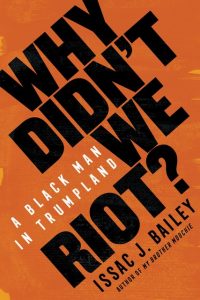
In July 2015 Dylan Roof, a white teen, killed nine African Americans in Bible a study group at Emanuel African Methodist Church in Charleston, South Carolina. Roof, like his January 6 Capitol Cousins wanted to start a race war. Issac J. Bailey chronicles this story in Why Didn’t We Riot: A Black Man in Trump Land. Bailey, an award-winning journalist, author and scholar, reminds that in writing about Roof, his editors allowed him to be as harsh as he chose. At the same time, they cut any negative references to white police killing Blacks. Bailey continues “Make no mistake, this level of thinking isn’t the sole dominion of Trump supporters and white conservatism. White liberals here often demand it too, including a friend who told me I was turning an ally into an enemy for speaking forcefully about yet another white police officer shooting yet another Black man. He votes for Democrats. He preaches racial equality. He was more angered by my refusal to accept the death of an unarmed Black man at the hands of the police than by the killing itself.”
Sound familiar? It can be exhausting being Black in this rhetorical place, which is why sometimes we’ve whispered when we should have roared. We have acquiesced when we should have said “Hell No!” that’s why maybe Black People should have rioted after what Roof did and what the cops did, because it seems to be the only way to get white people to pay attention. We should have made it clear just how angry we are, and how angry we have long been. We should have cared less about white comfort, more about equality. But fighting racism nonstop in a place that uses our tax dollars to honor the men who raped our ancestors can feel futile. Having to fight for racial equality against our white neighbors who want to look the other way frustrates like little else. Listening to supposed allies explain it away leaves you tired.
Bailey continues:
“The word “riot” conjures up images of “mobs” or” gangs” of Black people stalking the streets with baseball bats, staring down police in military gear and throwing Molotov cocktails. I’m not talking about that. I’m talking about a COMMUNAL SCREAM. I’m talking about a public declaration of Black Anger, the kind that scares those in power, scares white people, scares not a few well off, comfortable Blacks. I’m talking about asserting our right, our moral duty, to not sit quietly, to no longer substitute calm for justice. We should not have allowed the police to go back to policing as usual without a reckoning. We should have demanded an independent oversight of such incidents that isn’t led by law enforcement officials. We should have said we would not relent until these officers were stripped of their badges and batons. White people have been rioting against Black people since before the founding of he country, calling it “proper ‘and “natural ‘ and “God ordained” even as they insisted Black people should not riot too. Throughout our history when white people rioted, they killed scores of Black people, burned Black Businesses, overturned elections in which Black people had emerged has victors and purposefully targeted Black people who found a way to become wealthy and educated despite the long tentacles of Jim Crow. “
Bailey seems to call for righteous, nonviolent riots that are persistent, strategic and self-sustaining.
Action Items:

As is my practice, the following are recommended. There is a clear and present danger that white power could erupt at any time, targeting Black institutions, people or assemblies. The following organizations provide survival literature, defensive devices and training models to resist.
- Lawyers Committee for Civil Rights Under Law; Brennan Center For Justice; American Civil Liberties Union; Southern Poverty Law Center. A visit to their respective websites may be as vital to your health as wearing a mask.
- Secure the book –Why Didn’t We Riot? A Black Man in Trump Land by Issac J. Bailey. It’s 175 pages of mandatory reading for all.
- Establish a Zoom conference session with others to consider the Bailey analysis and recommendations.
4 . Secure the recording of the Harper Lecture of Kathleen Belew, in which she discusses her book. Available in April. More info: 773-702-8360
- Establish an intergenerational Zoom conference with high school, college scholars, fraternity and sorority activists and with elders which can share lessons learned, strategies and tactics toward Black Protection in today’s environment.
Final Warning
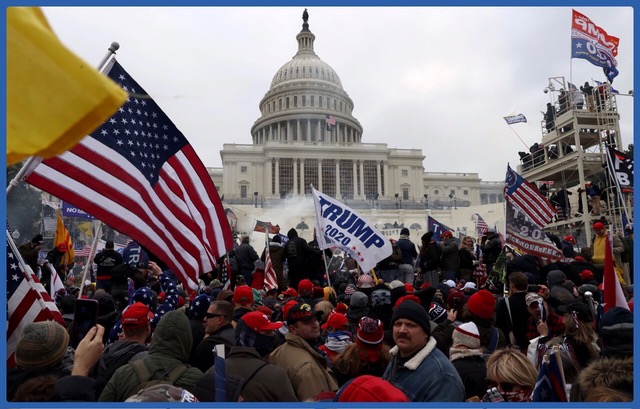
The breach of the Capitol was fomented by a leaderless resistance that included veterans, law enforcement officials and other white supremacists. They can strike again without warning. Black people can be targets. This essay is aimed at Individuals, community leaders, journalists, business organizations and educational institutions. Review the books and materials contained herein to protect gains made (Georgia‘s recent Senate elections despite attacks on Black voting) and the prevention of surprise attacks ( Emanuel AME Church in Charleston.) There is much to do toward Black survival and progress against the white power threat. Government alone can’t do it all, as January 6 made clear.
Paul King, Jr. is a construction consultant and member of Chicago’s Business Leadership Council


